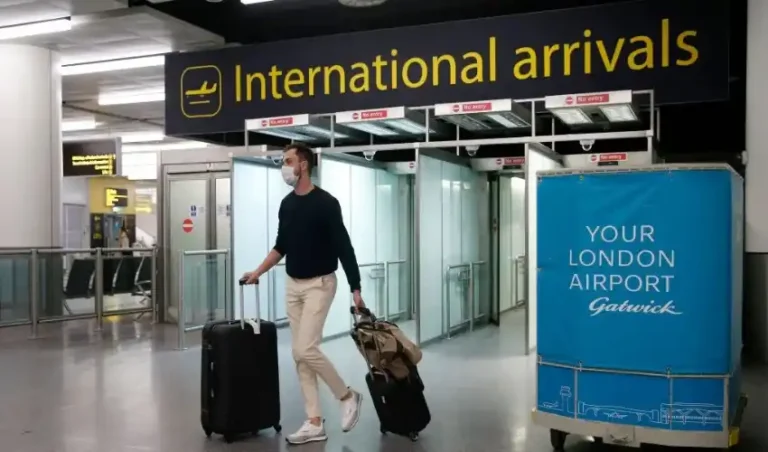Traveling between Heathrow and Gatwick airports is a common journey for many passengers navigating through London’s major air travel hubs. Whether you are catching a connecting flight or starting your trip, understanding the best options for transferring between these two airports can save time, reduce stress, and optimize your travel experience. This guide covers everything you need to know about Heathrow to Gatwick transfers, including transportation options, travel time, costs, and tips for a smooth journey.
Heathrow and Gatwick are two of the busiest airports in the United Kingdom, located approximately 40 miles apart. Heathrow is situated to the west of central London, while Gatwick lies to the south. Due to the distance and traffic conditions, there is no direct train connecting the two airports, which means travelers must consider other transport modes to transfer efficiently.
One of the most popular methods for transferring between Heathrow and Gatwick is by coach. The National Express coach service offers direct routes linking both airports. This option is convenient and affordable, with coaches running regularly throughout the day. The journey typically takes between 60 to 90 minutes depending on traffic. Booking tickets in advance can secure better prices, and passengers can benefit from free Wi-Fi and comfortable seating on most coaches. This option is particularly useful for travelers with moderate luggage who want a straightforward transfer without the hassle of multiple connections.
Another option is to use private airport transfer services or taxis. These provide door-to-door convenience and flexibility, especially for passengers traveling in groups or with heavy luggage. Private transfers can be booked online before travel, ensuring a driver is ready upon your arrival at Heathrow. Travel time by car usually ranges from 45 to 75 minutes depending on traffic, offering a quicker and more comfortable alternative to public transport. However, this convenience comes at a higher cost compared to coach services. It is advisable to book reputable providers to ensure safety and reliability.
For those preferring public transport, a combination of the London Underground and train services is possible but requires careful planning. One popular route involves taking the Heathrow Express or the Piccadilly Line from Heathrow to central London, then switching to a train from London Victoria station to Gatwick Airport. The Heathrow Express offers a fast connection to Paddington station, but passengers must then travel across London to Victoria to catch the Gatwick Express or Southern Railway trains. This route can be time-consuming and may take over two hours with transfers and waiting times. While public transport is generally cheaper than private transfers, travelers should consider luggage and time constraints.
When choosing a transfer method, consider the time of day and traffic conditions. London’s road traffic can be heavy during peak hours, affecting taxi and coach travel times. Early morning or late evening transfers may be quicker due to lighter traffic. Booking tickets in advance for coaches or private transfers can help avoid last-minute issues and secure the best prices.
Another emerging option is ride-sharing apps, which provide an alternative to traditional taxis. Apps like Uber operate between Heathrow and Gatwick, offering competitive prices and the ability to book rides on demand. However, ride-sharing prices can fluctuate based on demand, so it is wise to compare options before your journey.
For business travelers or those valuing comfort and speed, helicopter transfers between Heathrow and Gatwick are available. Though expensive, this option drastically reduces travel time to approximately 15 minutes and offers a unique experience. It is ideal for those on tight schedules who want to avoid road traffic entirely.
When planning your transfer, keep in mind that each airport has multiple terminals. Heathrow has four terminals in use, and Gatwick has two. Make sure you know your departure and arrival terminals to avoid confusion and allow extra time for airport navigation.
Luggage policies also differ depending on the transfer method chosen. Coaches generally allow standard luggage but may have restrictions on size and quantity. Private transfers and taxis usually accommodate more luggage but confirming this at the time of booking is recommended. Public transport options require managing luggage through station platforms and escalators, which may be challenging for some travelers.
To summarize, the main options for taxi from heathrow to gatwick transfers include National Express coaches, private car transfers or taxis, public transport combinations, ride-sharing apps, and helicopter transfers. Coaches offer affordability and comfort with regular schedules. Private cars and taxis provide door-to-door convenience and flexibility but at a higher cost. Public transport is cheaper but requires more planning and time. Ride-sharing apps offer a modern alternative, and helicopter transfers cater to those seeking speed and exclusivity.
Choosing the right transfer depends on your budget, time constraints, luggage, and personal preferences. Booking in advance and allowing buffer time between flights or appointments will ensure a stress-free transfer experience. Always check for the latest travel schedules and traffic updates, especially during holidays or peak travel seasons.
In conclusion, transferring between Heathrow and Gatwick airports is manageable with several reliable transport options tailored to different needs. By understanding the pros and cons of each mode, travelers can make informed decisions and enjoy a smooth transition between London’s major airports. Whether you prioritize cost, convenience, or speed, planning ahead will help you navigate the Heathrow to Gatwick transfer efficiently and start your journey on the right foot.
